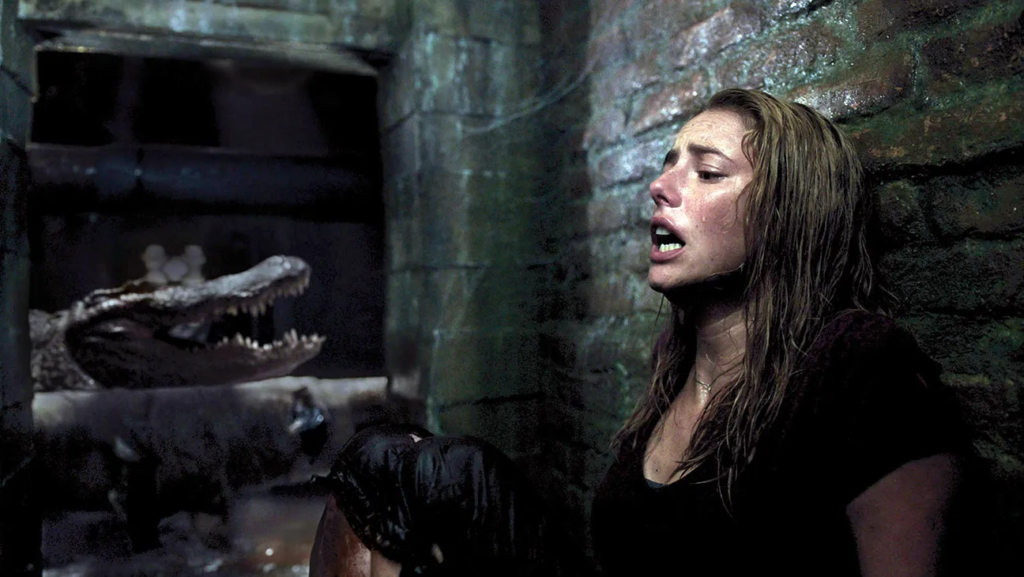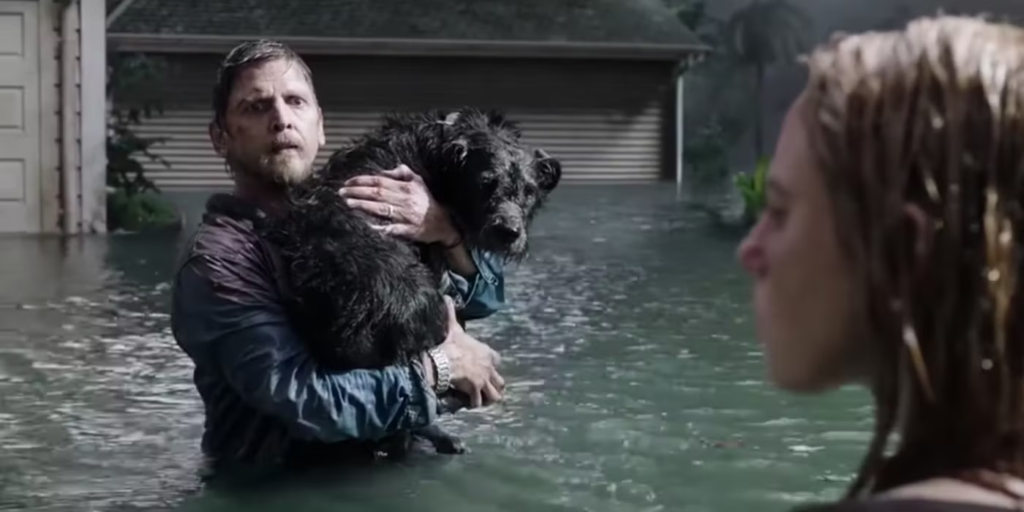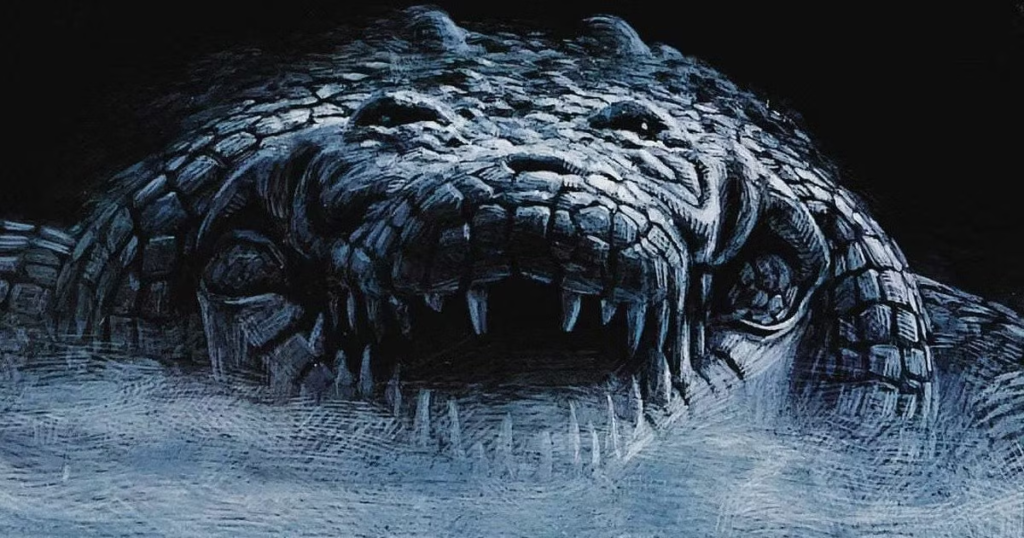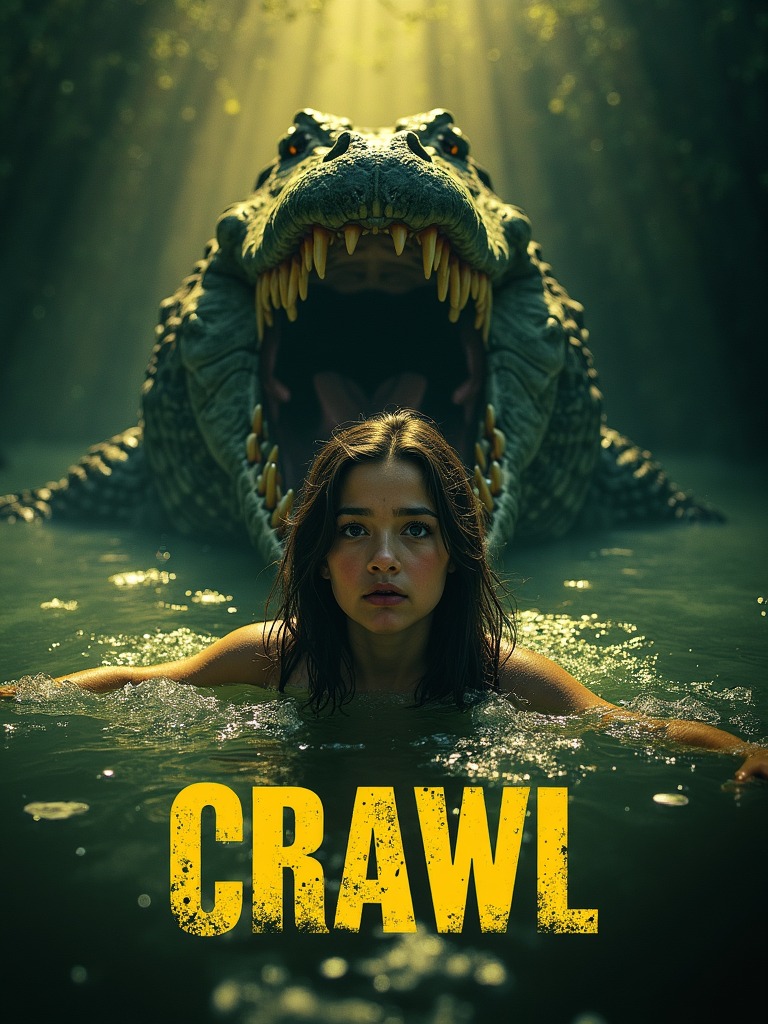Crawl (2019), directed by Alexandre Aja, is a high-stakes thriller that pits its characters against fierce, natural predators in an intense fight for survival. This horror-thriller, set during a massive hurricane in Florida, follows Haley (Kaya Scodelario) and her father (Barry Pepper) as they try to escape a rapidly flooding home that’s also become infested with dangerous alligators. Released on July 12, 2019, Crawl was met with positive reviews for its tension-filled scenes, impressive practical effects, and engaging performances.
Budget and Production Details
Produced by Sam Raimi, the mastermind behind the Evil Dead franchise, Crawl had a modest budget of approximately $13.5 million. For a thriller filled with effects-driven sequences and significant water-based sets, this budget is considered relatively low. Aja, known for his work on The Hills Have Eyes (2006) remake, used his expertise in creating palpable suspense on a lean budget.

The production required intricate work to create the necessary effects on a limited budget, as it demanded water-filled sets and realistic CGI alligators. Filming took place primarily in Serbia, where crews created an elaborate replica of a suburban Florida house that could be safely flooded and manipulated. The production team also built a large water tank for filming underwater and flooding sequences, allowing for greater control over the action while adding to the realism of the scenes. The film’s realistic gators were made possible by a blend of practical effects and CGI from visual effects company Rodeo FX, who delivered surprisingly lifelike creatures that added to the film’s terrifying atmosphere.
Success Story
When Crawl hit theaters, it managed to impress audiences and critics alike despite its relatively straightforward premise. By focusing on suspense and crafting tense scenes of survival against both the elements and predators, Crawl quickly established itself as one of the most gripping films of the summer. Against its $13.5 million budget, Crawl went on to gross over $91 million globally, marking it as a significant financial success.


Much of this success can be attributed to Aja’s direction and the film’s well-crafted thrills. Aja and Raimi were praised for embracing a simple but effective story structure, keeping the focus on Haley’s determination to save her father and survive. Scodelario’s performance as the resilient swimmer-turned-survivor was widely acclaimed, adding depth and believability to the character as she fights her way through one life-threatening scenario after another.
Audience Reception and Cultural Impact
The film received positive responses for its pacing, commitment to thrills, and practical effects. Audiences appreciated the simplicity of its storyline and the film’s ability to maintain suspense in a confined, claustrophobic environment. Critics noted that Crawl was an example of genre cinema done right, blending horror and thriller elements into a lean narrative that showcased the dangers of both nature and human resilience.
In an era where larger-budget films tend to dominate the box office, Crawl became a standout example of how a lower-budget film, when handled with skill and creativity, can outperform expectations. The success of Crawl has also highlighted Alexandre Aja’s talent for creating engaging horror experiences on a budget, proving that the genre can thrive with intelligent direction and strong storytelling.

Legacy
Since its release, Crawl has become a favorite among fans of survival horror, joining the ranks of well-regarded creature features. It showcased that mainstream audiences still have an appetite for tight, character-driven thrillers that don’t necessarily rely on massive CGI set pieces or complex storylines. Crawl served as a reminder that horror films can deliver powerful experiences even when they focus on a single location, a handful of characters, and a relentless, real-world threat. The film’s financial success and acclaim have opened doors for similar projects, encouraging filmmakers to take creative risks with smaller budgets and lean narratives.




